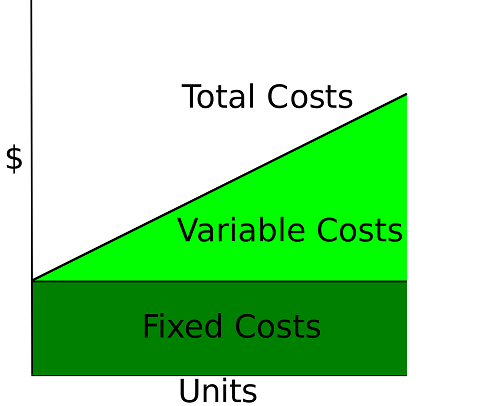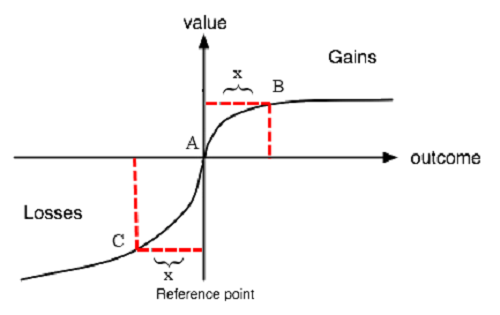Difference between Avoidable Cost and Unavoidable Cost
What is avoidable cost?
It is the cost incurred only if firm takes a decision related to production or investment is taken. This kind of cost is variable and depends on level of output and by external inputs where firm can take choice depending in a cost of opportunity of multiple decisions and incentives.
The avoidable cost can be separated in two types:
- Variable cost: It is respective costs related with velocity of production. If firm choose minimize cost based on quantity to production can be reduced to 0 or based on a minimization criteria.
- Stepped fixed Cost: It represent costs that depend of multiple levels of production beyond current threshold of production.
The decision of firm of reduce avoidable cost is result of cost of opportunity of getting inputs with a relative price more economic. Inputs required in production are traded in domestic and international markets, where can be exchanged with a better price if real exchange rate is appreciated or comparative costs abroad countries, divided in three main cases:
- Labor costs
- Raw Material
- Advanced machinery
- Capital lending and interest rates swap
Also, firm can take choice of reduce avoidable cost as result of changes in their industry, where size of production is reduced as result of shortfall of demand and firms require to reduce prices to compensate reduction of price of market and avoid losses.
What is unavoidable cost?
It is the cost that still incurred for firm even if decision of producing is not taken. These costs are as result of risk taken by firms in their industries for maintaining in the market and cover uncertainty of decisions of production. The fixed cost are the main representation of unavoidable cost for firms, as result of firm to install capacity, administrative workforce and tools, require an initial investment that can be used or maybe not.
Additional fixed costs that are unavoidable for firm can be shown as follows:
Cost of capital: Represent the cost of expected return of investment provided by owners of firm, that does not depend on production but opportunity cost between another investment choices different than current industry where money was invested.
Sunk cost: There are the multiple costs associated to start business that cannot be recovered in balance sheet until firm is producing benefits, such as regulation costs, startup firm costs, building improvement costs and training costs.
Examples of unavoidable costs refer cases where quality depends on a single provider of an input with a unique quality of product impact over costs of firm. This kind of cost cannot be controlled by firm and avoided unless firm get new providers and switch it as an avoidable cost.
Additional examples of unavoidable costs happen when systematic risk of taking a position of financial assets impact negatively over return of firm, and cannot be covered with diversification of investment.
Difference between avoidable cost and unavoidable cost
-
Velocity of production
Avoidable cost
The usage of labor, capital and raw material inputs depend of level of production decided to undertake for firm.
Unavoidable cost
The unavoidable costs do not depend on velocity of production, but it occurs as an initial investment to function the firm.
-
Separation of costs
Avoidable cost
Avoidable cost can be separated in variable costs, represented in inputs of labor, capital and raw material, and stepped fixed costs, represented in investment required to change total level of output of firm.
Unavoidable cost
Unavoidable costs are separated in cost resulted of systematic risk and changes in capital cost for valuating business.
-
Managing costs
Avoidable cost
These cost can be controlled by firm due to it depends on a level of output defined by an optimization criterion, being profit maximization or minimize costs.
Unavoidable cost
The firm cannot control it as result of exogenous variables occurred at macroeconomic and industrial level.
-
Swap of costs
Avoidable cost
Firms can switch avoidable costs in a market, using local or international providers of inputs required to create final product.
Unavoidable cost
The firm cannot switch unavoidable costs in a market as result it does not have immediate substitutes, but valuating the changes generated in the costs.
-
Revenue short fall
Avoidable cost
If firm cannot achieve a maximization profit, can choose move towards a position of minimize costs and avoid cost related to production, where average cost and marginal cost have same value.
Unavoidable cost
As result of reduction of benefits generated by business, unavoidable cost related capital cost, systematic risk, default risk and coverage of adversity cost may increase.
Avoidable Cost versus Unavoidable Cost
| It can be excluded as result of velocity of production. | It exists even if production is not performed. | |
| These are direct costs for firm. | These are indirect costs for firm. | |
| There are controlled by firm. | Impacted by external affairs from firm. | |
| Costs can be obtained and switched in a market of multiple providers from domestic and abroad origins. | Occurs when only exist a provider of special service to function the firm or generated in an industrial level. | |
| Costs related to inputs for production. | Cost related to opportunity of usage of capital and systematic risk. |
Summary
- Avoidable and unavoidable costs are related to organization´s theory for valuation and undertake decision of production of firm.
- Avoidable costs represent the inputs where firm can change it depending on multiple levels of production.
- Unavoidable costs represent costs where it does not depend on velocity of production and firm cannot control by systematic risk and economic conditions.
- Avoidable cost are divided in variable cost that changes on discrete values and stepped fixed cost that changes on firms decision to increase installed capacity and levels of output beyond its limit.
- The main representations of avoidable cost are represented in labor cost, raw material costs and capital costs that can buy in local or international markets depending on relative price of inputs.
- Unavoidable costs are exogenous to firm and there are result of systematic risk cost of capital, and industrial performance.
- Sunk costs are an example of unavoidable costs, where it does not depend on production but there are necessary to start production by firm.
- Avoidable and unavoidable costs can be valuated at current prices and differentiate them, to investment decision and profitability of business.
- Difference between a Manager and Entrepreneur - October 30, 2017
- Difference between Shares and Debentures - October 10, 2017
- Difference between Avoidable Cost and Unavoidable Cost - September 29, 2017
Search DifferenceBetween.net :
Leave a Response
References :
[0]Robbert, A. (2013). Cost Structures and Alternative Mixes. In Costs of Flying Units in Air Force Active and Reserve Components (pp. 11-24). RAND Corporation. Retrieved from http://www.jstor.org.ezproxy.unal.edu.co/stable/10.7249/j.ctt4cgdmb.11
[1]Rorem, C. (1928). Differential Costs. The Accounting Review,3(4), 333-341. Retrieved from http://www.jstor.org.ezproxy.unal.edu.co/stable/239051
[2]Stern School of Business, & New York University. (2016). Infrastructure Attributes and Problems of Market Failure. In Walter I. (Ed.), The Infrastructure Finance Challenge(pp. 21-30). Cambridge, UK: Open Book. Retrieved from http://www.jstor.org.ezproxy.unal.edu.co/stable/j.ctt1sq5v21.8
[3]Sutton, J. (1999) Sunk Costs and Market Structure. The MIT Press, Cambridge, Massachusetts, 1991. ISBN 0-262-19305-1
[4]Image Credit: https://en.wikipedia.org/wiki/Fixed_cost
[5]Image Credit: https://en.wikipedia.org/wiki/Endowment_effect


